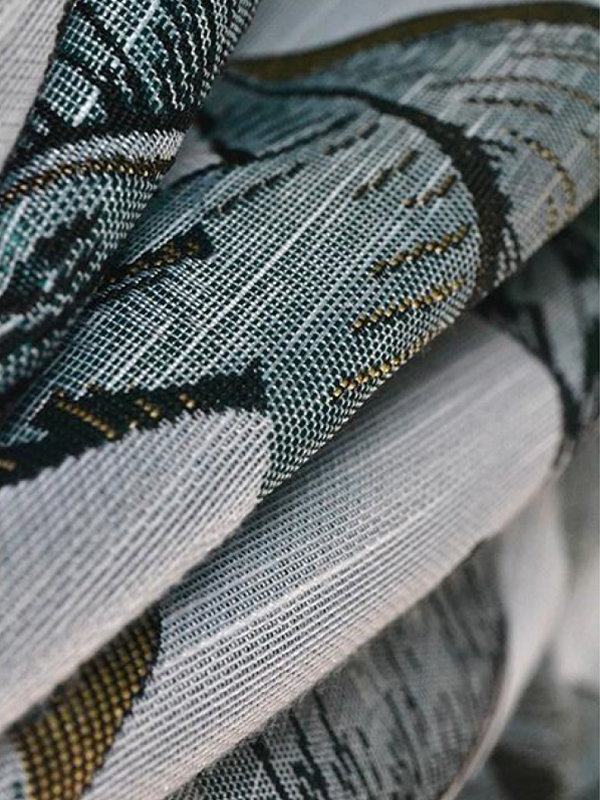When it comes to interior design, few elements have as much impact as curtains. Beyond their practical purpose of providing privacy and controlling light, curtains serve as a canvas for personal expression and aesthetic enhancement. But is curtain fabric truly the key to transforming your living space? Let’s explore how the choice of fabric can dramatically influence the ambiance, functionality, and overall appeal of a room.
Aesthetic Versatility: Setting the Tone of Your Space
Curtain fabric plays a pivotal role in defining the visual character of a room. From luxurious velvets to breezy linens, the texture, color, and pattern of the fabric can evoke different moods and styles, making it an essential tool for interior designers and homeowners alike.
For instance, heavy fabrics like velvet or brocade exude opulence and sophistication, making them ideal for formal spaces such as dining rooms or master bedrooms. Their rich textures catch light beautifully, adding depth and elegance to any setting. On the other hand, lightweight fabrics like cotton, linen, or sheer voile create a sense of airiness and simplicity, perfect for casual living areas or minimalist interiors.
The color and pattern of the fabric further amplify its impact. Bold prints or vibrant hues can serve as statement pieces, injecting personality and energy into a neutral room. Conversely, subtle tones and delicate patterns offer a calming effect, promoting relaxation in spaces like bedrooms or reading nooks. By carefully selecting curtain fabric, you can harmonize your decor or introduce striking contrasts that elevate the entire design scheme.

Moreover, curtain fabric isn’t limited to traditional aesthetics. Modern innovations allow for customizable options, such as digitally printed designs or eco-friendly materials, enabling homeowners to align their choices with contemporary trends and values. This adaptability ensures that curtain fabric remains a timeless yet dynamic element of interior design.
Functional Excellence: Balancing Practicality and Comfort
Beyond aesthetics, curtain fabric also excels in functionality, addressing practical needs such as light control, insulation, and noise reduction. The right fabric can significantly enhance the comfort and efficiency of your living space.
For example, blackout fabrics are designed to block out sunlight completely, making them indispensable for bedrooms or home theaters where darkness is essential. These fabrics often feature tightly woven fibers or specialized coatings that prevent light penetration while maintaining durability. Similarly, thermal curtains, typically made from insulating materials like polyester blends or acrylics, help regulate indoor temperatures by reducing heat loss in winter and blocking heat gain in summer. This not only improves comfort but also contributes to energy savings.
Soundproofing is another area where curtain fabric shines. Dense materials like velvet or microfiber absorb sound waves, reducing echo and external noise. This makes them particularly valuable in urban environments or multi-functional spaces like home offices, where concentration and tranquility are paramount.
Additionally, advancements in fabric technology have introduced stain-resistant and antimicrobial treatments, enhancing the longevity and hygiene of curtains. These features are especially beneficial in high-traffic areas or homes with children and pets, ensuring that your curtains remain pristine despite daily wear and tear.
Addressing Challenges and Future Innovations
While curtain fabric offers numerous benefits, there are challenges to consider. High-quality materials can be expensive, and improper care may lead to fading or damage over time. However, ongoing innovations are addressing these issues. For instance, sustainable fabrics made from recycled materials or natural fibers are becoming more accessible, catering to eco-conscious consumers without compromising quality.
Smart textiles are also on the horizon, with some manufacturers experimenting with curtains embedded with sensors or automated systems. Imagine curtains that adjust opacity based on sunlight intensity or integrate seamlessly with smart home ecosystems—these innovations could redefine how we interact with our living spaces.
Curtain fabric is far more than a decorative afterthought—it’s a powerful tool for transforming your living space. By balancing aesthetics with functionality, it addresses both the visual and practical needs of modern interiors. So, is curtain fabric the key to transforming your living space? With its ability to inspire creativity, enhance comfort, and adapt to evolving technologies, it’s clear that this humble material holds immense potential.

 English
English 中文简体
中文简体 Español
Español عربى
عربى













